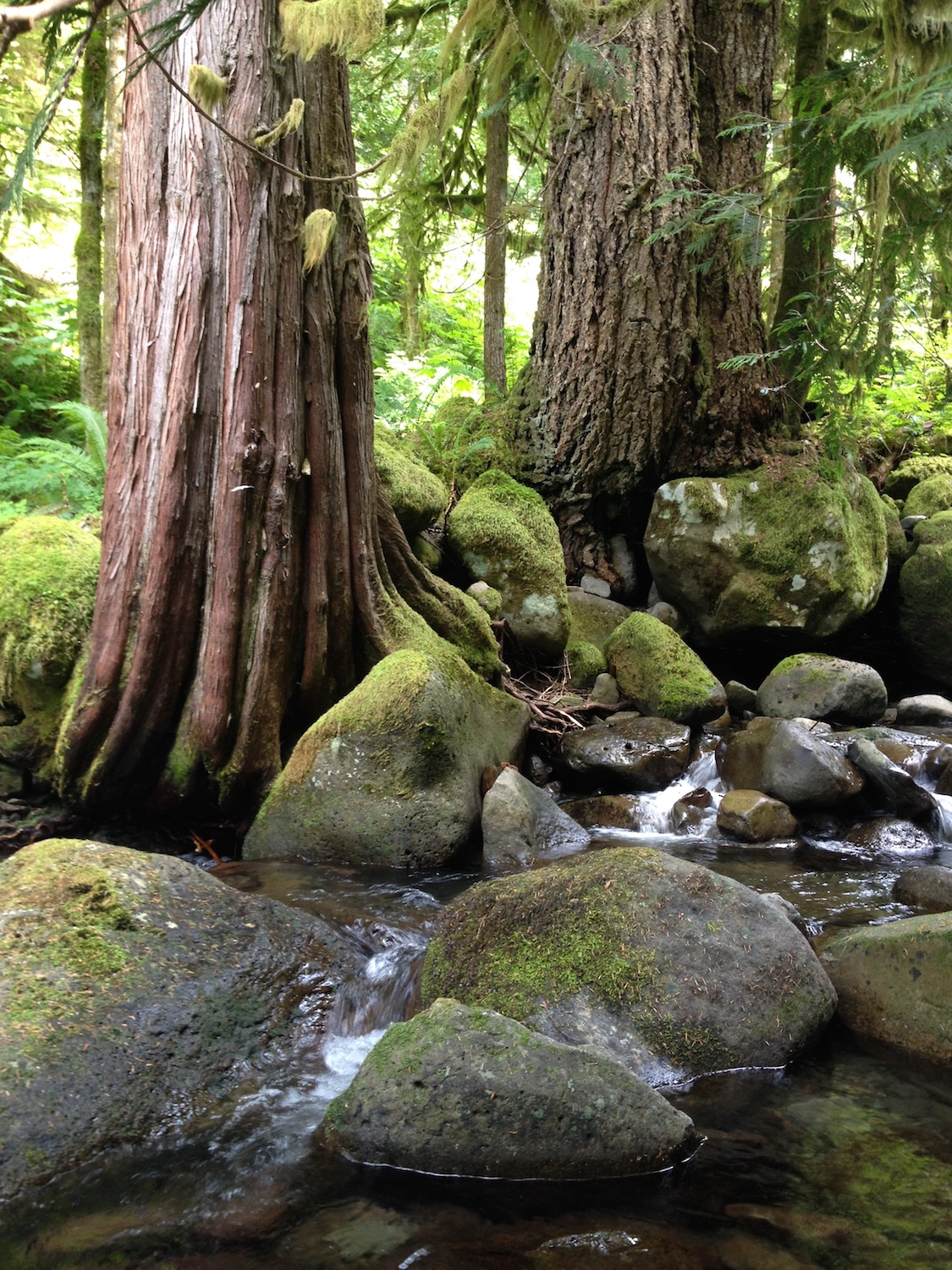- Trees improve water quality by taking up ground water, filtering it through their vascular system and then releasing it in a purified state into the atmosphere. This along with a trees releasing of pure oxygen is why the air feels so clean and refreshing in a forest.
- Tree roots help to hold soil in place, especially on slopes, along roadways and on riverbanks, thus helping to prevent soil erosion and valuable topsoil from washing away. Topsoil, which takes hundreds and even thousands of years to produce is necessary for growing food crops.
- Trees planted in urban areas soak up surface water that would otherwise run into storm sewers thus reducing the amount of polluted water going into our watersheds.
- Trees help to reduce energy consumption by humans. Trees lower ground temperatures by blocking sunlight from hitting the ground. The shade that trees produce benefits both humans and animals. For example, a house shaded from the hot sun can be 10 degrees cooler than a non-shaded area, thus saving money and valuable energy needed to cool a house in hot weather. In a general sense, shade from trees makes living conditions on earth more tolerable in hot climates for both humans and animals. They act as air conditioners in that on sunny days they release huge amounts of water which helps to cool the atmosphere. This natural process is called evaporative cooling.
- Trees block harmful ultraviolet rays from hitting people who take shelter under them.
- Trees also cool the air around them, since their leaves release water, making the earth more temperate.
- Trees soak up large amounts surface water runoff (in their roots and leaves) from rain thus reducing soil erosion especially on hillsides, riverbanks and along roads (and loss of valuable food producing topsoil) and water-born pollutants that would otherwise flow into lakes, stream, rivers and eventually oceans.
- From trees humans make many products essential to human life including wood and paper products, pharmaceuticals and food.
- Trees provide habitat for countless animals and mircro-organisms that are essential to human survival.
- When trees take in carbon dioxide (CO2), they strip the carbon atom from the oxygen atoms, thus releasing the oxygen back into the atmosphere, but they keep the carbon with which they combine minerals from the soil to produce tree food. The food that trees don’t use immediately is stored in the roots, trunks and branches of the tree for later use. This is called carbon sequestration, and is a good thing in that this helps to reduce atmospheric “green house gases.”
- Trees reduce air pollution by scrubbing the air of pollutants as they trap airborne particulate in their leaves, trunks and branches.
- Trees promote physical, emotional and psychological health and healing of people as well as feelings of peace and well-being.
- Trees in retail business areas help to increase business.
- Trees mark the changing of the season, thus helping humans to mark time.
- Trees create countless economic opportunities for humans (logging and wood products, arboricultual services, firewood, food and agricultural production and more).
- Trees provide places for children to play and people to gather around for social functions.
- Trees have served as memorials, historical markers, landmarks and property boundaries since time immemorial because they live for so long. A tree memorial can become a living legacy to a loved one or an important historical figure. As such, trees help to give humans a sense of history, identity, permanency, and a connection to their past history. Trees also help to bring the generations together by giving people a sense of unity and a connection to the past.
- Trees provide visual barriers from unsightly objects and views. They provide hedges, create screens, fences and separations between people when privacy is needed.
- Trees create wind screen, thus protecting people, structures and crops from damaging weather (e.g. heat, wind and frost).
- Trees are a valuable fuel source providing heat for homes and are an energy source to generate power.
- The presence of trees increase property values.
- Trees, in general, make the earth, our homes and cities a more visually pleasing, hospitable and inhabitable place to live.
How Trees Benefit You
Leave a reply


